Items
-
 Lost origins of Information Science Presentation given by Vanda Broughton at the Hidden Histories Symposium, September 2011, UCL.
Lost origins of Information Science Presentation given by Vanda Broughton at the Hidden Histories Symposium, September 2011, UCL. -
 Data vs. Text: forty years of confrontation Presentation given by Lou Burnard at the Hidden Histories Symposium, September 2011, UCL.
Data vs. Text: forty years of confrontation Presentation given by Lou Burnard at the Hidden Histories Symposium, September 2011, UCL. -
 Crowd sourcing: beyond the traditional, boundaries of academic history Presentation given by Melissa Terras at the Hidden Histories Symposium, September 2011, UCL.
Crowd sourcing: beyond the traditional, boundaries of academic history Presentation given by Melissa Terras at the Hidden Histories Symposium, September 2011, UCL. -
 Unwriting the history of Humanities Computing Presentation given by Edward Vanhoutte at the Hidden Histories Symposium, September 2011, UCL.
Unwriting the history of Humanities Computing Presentation given by Edward Vanhoutte at the Hidden Histories Symposium, September 2011, UCL. -
 Beyond chronology and profession: discovering how to write a history of the Digital Humanities Presentation given by Willard McCarty at the Hidden Histories Symposium, September 2011, UCL.
Beyond chronology and profession: discovering how to write a history of the Digital Humanities Presentation given by Willard McCarty at the Hidden Histories Symposium, September 2011, UCL. -
 Different stories to be lived and told Extract from a presentation given by James G.R. Cronin at the Hidden Histories Symposium, September 2011, UCL.
Different stories to be lived and told Extract from a presentation given by James G.R. Cronin at the Hidden Histories Symposium, September 2011, UCL. -
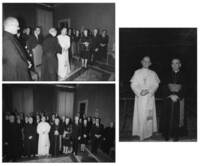 No. 0641 20/05/74, VATICANO, Udienza Paolo VI.
No. 0641 20/05/74, VATICANO, Udienza Paolo VI. -
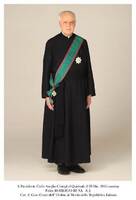 No. 0917 20/05/05, ROMA, Presid.Ciampi nomina Cavaliere di Gran Croce dell'Ordine al Merito della Repubblica Italiana. Busa padre.
No. 0917 20/05/05, ROMA, Presid.Ciampi nomina Cavaliere di Gran Croce dell'Ordine al Merito della Repubblica Italiana. Busa padre. -
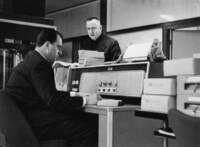 No. 0243 26/11/60, TUBINGA Univ. + IBM
No. 0243 26/11/60, TUBINGA Univ. + IBM -
 No. 0167 09/06/59, GALLARATE, Ditta Cuccirelli.
No. 0167 09/06/59, GALLARATE, Ditta Cuccirelli. -
 No. 0014 A luncheon in honor of the Rev. Roberto Busa, and members of the clergy, given by IBM in the Sherry Netherland Hotel, New York, is attended by, left to right, counter clockwise: Perry J.W. Prof, Bradley Phil, Bier William op Rev., Castelli Francis, Mirabile Charles, Tasman Paul, Provasoli Louis Dr., Ryan John, IBM sales representative, Rebsamen G.J., Merriwether Stuart, Prof., Parker William R. Prof., Silver Henry, Busa padre, Phillips J.G., Tessarolo Giulio Rev., Yannitelli Victor SJ Rev., Pennell L.P. [Note: this description is given in the corresponding index file. This file was, to the best of our knowledge, compiled and maintained by Busa himself]
No. 0014 A luncheon in honor of the Rev. Roberto Busa, and members of the clergy, given by IBM in the Sherry Netherland Hotel, New York, is attended by, left to right, counter clockwise: Perry J.W. Prof, Bradley Phil, Bier William op Rev., Castelli Francis, Mirabile Charles, Tasman Paul, Provasoli Louis Dr., Ryan John, IBM sales representative, Rebsamen G.J., Merriwether Stuart, Prof., Parker William R. Prof., Silver Henry, Busa padre, Phillips J.G., Tessarolo Giulio Rev., Yannitelli Victor SJ Rev., Pennell L.P. [Note: this description is given in the corresponding index file. This file was, to the best of our knowledge, compiled and maintained by Busa himself] -
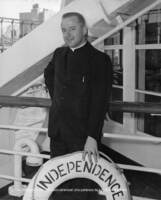 No. 0041 05/10/56 NEW YORK Busa padre Rev. parte da N.Y. su "Independence"
No. 0041 05/10/56 NEW YORK Busa padre Rev. parte da N.Y. su "Independence" -
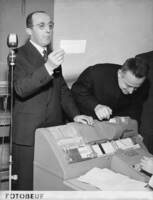 No. 0100 17/12/56, GALLARATE, Aloisianum [Note: this description is given in the corresponding index file. This file was, to the best of our knowledge, compiled and maintained by Busa himself]
No. 0100 17/12/56, GALLARATE, Aloisianum [Note: this description is given in the corresponding index file. This file was, to the best of our knowledge, compiled and maintained by Busa himself] -
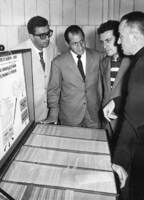 No. 0128 03/09/58, BRUXELLES, Expo '58
No. 0128 03/09/58, BRUXELLES, Expo '58 -
 No. 0207 17/01/60, NEW YORK, Residenza del Cardinale.
No. 0207 17/01/60, NEW YORK, Residenza del Cardinale. -
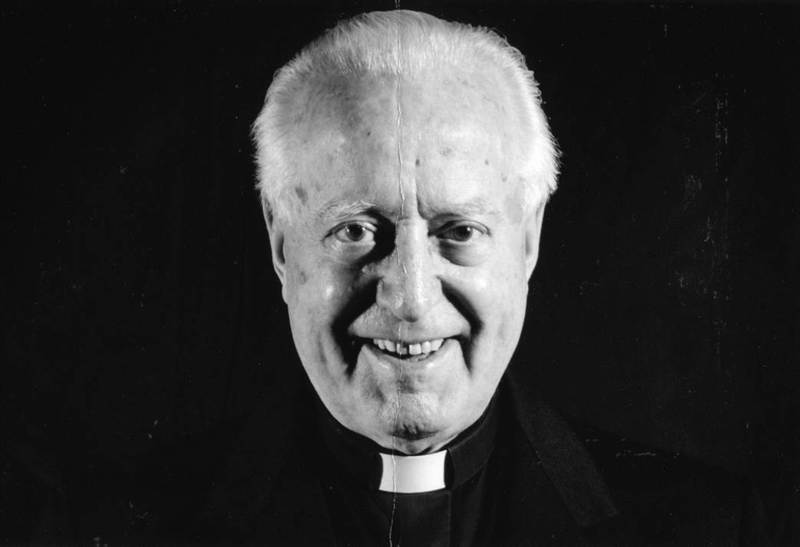 No. 0910 26/06/01, GALLARATE Busa padre Foto di Ferrario Lucia in Roma
No. 0910 26/06/01, GALLARATE Busa padre Foto di Ferrario Lucia in Roma -
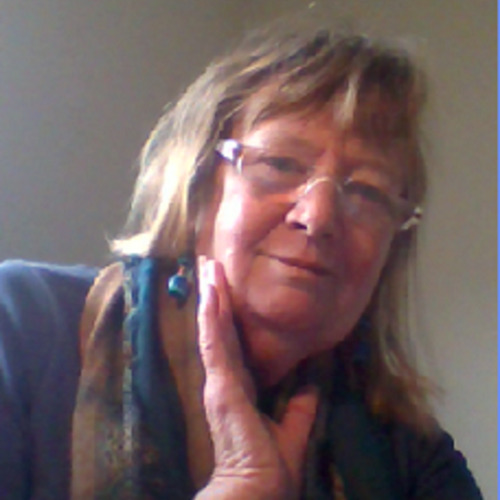 The influence of algorithmic thinking: Judy Malloy and Julianne Nyhan This interview was carried out via skype on 11 August 2015 at 20:30 GMT. Malloy was provided with the core interview questions in advance. Here she recalls that after graduating from University she took a job as a searcher/editor for the National Union Catalog of the Library of Congress. About a year after she arrived Henriette D. Avram began work on the process of devising a way to make the library’s cataloguing information machine readable (work that would ultimately lead to the development of the MARC format (Schudel 2006)). Malloy recalls this wider context as her first encounter, of sorts, with computing technology: though she did not participate in that work it made a clear impression on her. She had learned to programme in FORTRAN in the 1960s when working as a technical librarian at the Ball Brothers Research Corporation. She had also held other technical roles at Electromagnetic Research Corp and with a contractor for the Goddard Space Flight Center, which was computerising its library around the time she worked there. She recalls that she did not use computers in her artistic work until the 1980s (when she bought an Apple II for her son). However, she had been working in an interactive, multimedia and associative mode for some time before then, as evidenced by the card catalog poetry and electronic books that she created in the 1970s and early 80s. In this interview she traces the importance of card catalogs, systems analysis and algorithmic thinking to many aspects of her work. She also reflects on why it was that the idea of combining computing and literature did not occur to her (and also was not practically feasible) until a later stage in her career. Among other topics, she reflects on the kinds of computing and computing environments that she encountered, from the reactions in the 1960s of some male engineers to the presence of a female technical librarian in the mainframe room to the thrill of discovering the community that was connected via the Whole Earth 'Lectronic Link (The WELL).
The influence of algorithmic thinking: Judy Malloy and Julianne Nyhan This interview was carried out via skype on 11 August 2015 at 20:30 GMT. Malloy was provided with the core interview questions in advance. Here she recalls that after graduating from University she took a job as a searcher/editor for the National Union Catalog of the Library of Congress. About a year after she arrived Henriette D. Avram began work on the process of devising a way to make the library’s cataloguing information machine readable (work that would ultimately lead to the development of the MARC format (Schudel 2006)). Malloy recalls this wider context as her first encounter, of sorts, with computing technology: though she did not participate in that work it made a clear impression on her. She had learned to programme in FORTRAN in the 1960s when working as a technical librarian at the Ball Brothers Research Corporation. She had also held other technical roles at Electromagnetic Research Corp and with a contractor for the Goddard Space Flight Center, which was computerising its library around the time she worked there. She recalls that she did not use computers in her artistic work until the 1980s (when she bought an Apple II for her son). However, she had been working in an interactive, multimedia and associative mode for some time before then, as evidenced by the card catalog poetry and electronic books that she created in the 1970s and early 80s. In this interview she traces the importance of card catalogs, systems analysis and algorithmic thinking to many aspects of her work. She also reflects on why it was that the idea of combining computing and literature did not occur to her (and also was not practically feasible) until a later stage in her career. Among other topics, she reflects on the kinds of computing and computing environments that she encountered, from the reactions in the 1960s of some male engineers to the presence of a female technical librarian in the mainframe room to the thrill of discovering the community that was connected via the Whole Earth 'Lectronic Link (The WELL).
